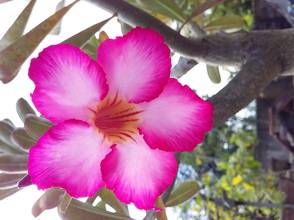
FAQ About Indoor Plant Eco-Friendly Pest Control Methods

What are eco-friendly pest control methods for indoor plants?
Eco-friendly pest control methods for indoor plants include using natural ingredients such as neem oil, insecticidal soaps, and homemade sprays made from ingredients like garlic, vinegar, or essential oils. These methods avoid harmful chemicals and focus on using substances that are less toxic to humans, pets, and the environment.

How does neem oil work as a pest control for indoor plants?
Neem oil works as an eco-friendly pest control by acting as an insect repellent and disruptor. It affects the hormonal balance of insects, preventing them from feeding, molting, mating, or laying eggs effectively. This makes it a sustainable option for managing pests without harming beneficial insects when used appropriately.

Can I use insecticidal soap on all types of indoor plants?
Insecticidal soap is generally safe for most indoor plants, but it is always recommended to test it on a small area of the plant first. Some plants with delicate or hairy leaves may be sensitive to soap sprays. Always follow the manufacturer's instructions and rinse the plant thoroughly after application if necessary.

What are some homemade pest control sprays for indoor plants?
Homemade pest control sprays can be made using water mixed with mild dish soap, crushed garlic, or essential oils like peppermint or eucalyptus. These sprays can help deter pests like aphids, spider mites, and whiteflies when applied to the affected areas of the plants.

How effective are essential oils in controlling indoor plant pests?
Essential oils such as peppermint, eucalyptus, and lavender have been found to be effective in repelling certain indoor plant pests. They can be mixed with water and used as a spray on plant leaves, acting as natural repellents. However, they should be used sparingly and tested for sensitivity on a small area first.

What are some common signs of pest infestation on indoor plants?
Common signs of pest infestation on indoor plants include yellowing leaves, sticky residue on the leaves or potting surface, visible insects like aphids or mites, webbing on leaves, or distorted growth. Regularly inspecting plants can help detect these signs early and manage infestations more effectively.

Are there any natural predators for indoor plant pests?
Introducing natural predators like ladybugs or parasitic wasps can be effective in controlling pests such as aphids and whiteflies. However, it might be challenging to maintain predator populations indoors. These biological controls are often more useful in greenhouse settings rather than small-scale indoor environments.

How can I prevent pest infestations on indoor plants naturally?
To prevent pest infestations naturally, maintain good air circulation, avoid overwatering, and remove any dead or decaying plant material. Keeping your plants healthy and less stressed makes them less susceptible to pests. Regularly cleaning leaves and checking for early signs of pests can also help prevent infestations.

Is diatomaceous earth safe for use on indoor plants?
Diatomaceous earth is generally safe for use on indoor plants. It works by physically abrading the exoskeleton of insects, causing them to dehydrate and die. It is non-toxic to humans and pets but should be handled carefully to avoid inhalation of the fine particles.

Can vinegar be used as a pest control method for indoor plants?
Vinegar can be used as a natural pest control method for indoor plants, especially for ants or fruit flies. A diluted vinegar solution can be sprayed onto affected areas to deter pests. However, avoid spraying directly on plant leaves as the acidity can cause damage.

What role does plant health play in eco-friendly pest control?
Plant health is crucial in eco-friendly pest control. Healthy plants are better at resisting pest attacks and will recover more quickly from damage. Providing proper light, water, and nutrients ensures that plants have strong natural defenses against pests.

Are sticky traps effective for indoor plant pest control?
Sticky traps can be an effective, eco-friendly method to control flying indoor plant pests such as whiteflies and fungus gnats. Placing these traps near affected plants can capture adult insects, interrupting their reproductive cycle and diminishing populations over time.

Can baking soda be used to control pests on indoor plants?
Baking soda can be used to control fungal issues rather than pests directly. For pest control, it may deter insects when combined with other ingredients like soap in DIY sprays. Experimenting with small applications is advised to ensure plant safety.

How can I identify if a pest control method is eco-friendly?
An eco-friendly pest control method typically uses non-toxic, biodegradable substances that do not harm humans, pets, or the environment. Look for natural ingredients, or products labeled as organic or biodegradable. Additionally, consider methods that do not cause harm to beneficial insects.

What are beneficial insects, and how do they help with pest control?
Beneficial insects are species that naturally control pest populations by predation or parasitism. Examples include ladybugs, predatory mites, and lacewings. They help by feeding on pests such as aphids, mites, and whiteflies, offering a natural and effective pest control solution.

Is it possible to completely eliminate pests from indoor plants using eco-friendly methods?
While eco-friendly methods can significantly reduce pest populations and manage infestations, completely eliminating pests can be challenging. Consistent monitoring, proper plant care, and combining several control tactics are often required for the best results.

How often should I apply eco-friendly pest control treatments to indoor plants?
The frequency of eco-friendly pest control applications depends on the type of pest and the severity of the infestation. Regular inspection and application once every few weeks or when pests are first detected can help manage populations without overuse.

What is the role of cultural practices in preventing pest problems on indoor plants?
Cultural practices include maintaining proper watering regimes, choosing pest-resistant plant varieties, and ensuring good air circulation. These practices contribute to plant health and can prevent favorable conditions for pest outbreaks, reducing the need for active interventions.

Can cinnamon be used as a natural pest control?
Cinnamon has anti-fungal properties and can act as a deterrent to certain pests. Sprinkling cinnamon powder on the soil surface may help with prevention of fungus gnats and can also minimize fungal growth, making it an eco-friendly option for indoor plants.

What precautions should I take when using natural pest control methods indoors?
When using natural pest control methods, always test new treatments on a small area first to monitor any adverse reactions. Ensure the area is well-ventilated during application, especially with sprays, and store all substances properly away from children and pets.
